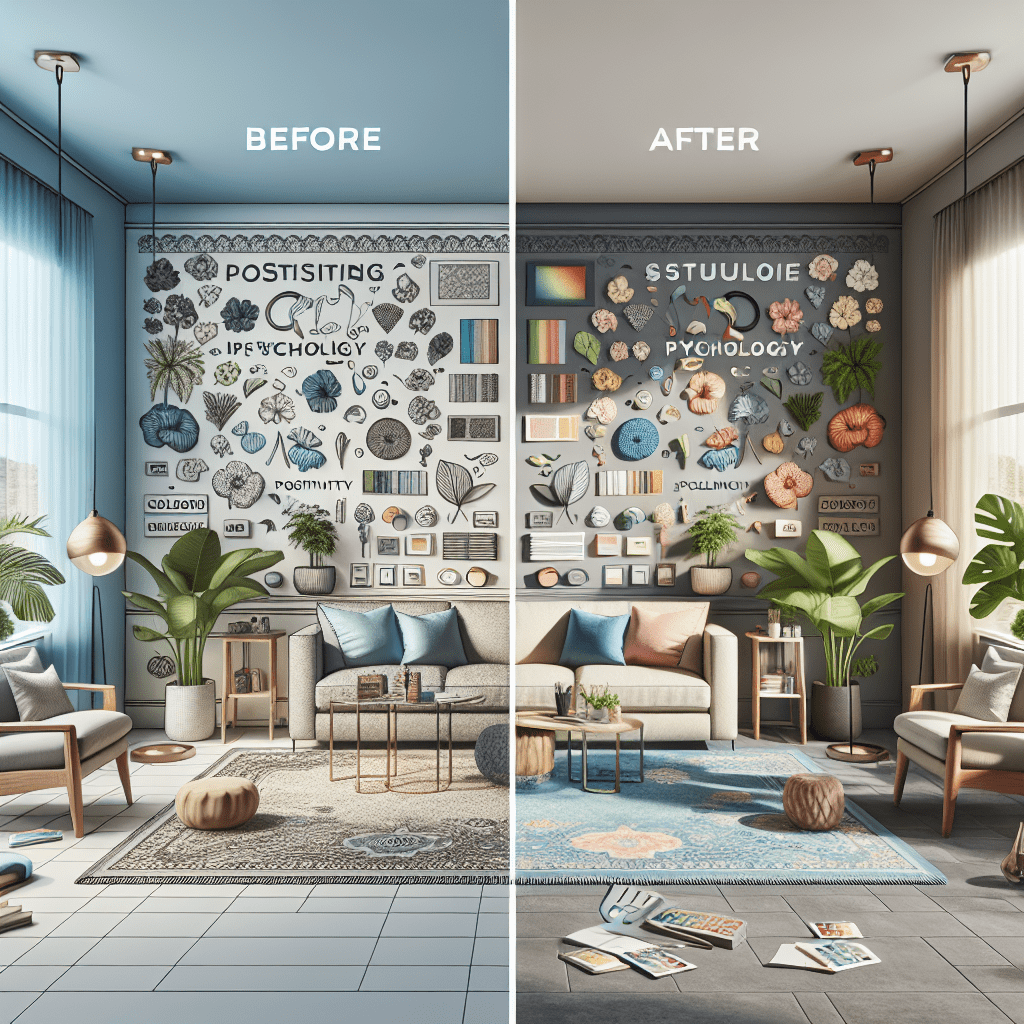Color psychology is an essential element in Interior Design. The colors we choose to incorporate into our spaces can have a profound impact on our emotions, behavior, and overall well-being. By understanding the power of color psychology, you can transform your space into a haven that reflects your personality and enhances your mood. In this article, we will explore how different colors can influence the ambiance of a room and provide tips on how to use color effectively in Interior Design.
The Psychology of Color
Color psychology is the study of how different colors can elicit emotional responses and influence human behavior. Each color is associated with specific meanings and can evoke various sensations and moods. When designing an interior space, it is important to consider the psychological effects of color to create a harmonious and balanced environment.
Red
Red is a powerful color that is often associated with passion, energy, and excitement. It can stimulate the senses and evoke feelings of warmth and intensity. In Interior Design, red is often used as an accent color to add drama and create a focal point in a room. However, too much red can be overwhelming and may increase feelings of aggression or stress.
Blue
Blue is a calming and serene color that is often used in bedrooms and bathrooms to promote relaxation and tranquility. It is associated with peace, stability, and trustworthiness. Blue can help reduce stress and lower blood pressure, making it an ideal color for creating a peaceful sanctuary in your home.
Yellow
Yellow is a cheerful and uplifting color that can brighten up any room. It is associated with happiness, optimism, and creativity. Yellow is often used in kitchens and dining rooms to stimulate the appetite and create a welcoming atmosphere. However, too much yellow can be overwhelming and may increase feelings of anxiety or restlessness.
Green
Green is a versatile color that is associated with nature, harmony, and balance. It can create a sense of tranquility and promote feelings of growth and renewal. Green is often used in living rooms and home offices to create a peaceful and rejuvenating environment. It is also a great color for promoting focus and concentration.
Pink
Pink is a romantic and feminine color that is often used in bedrooms and nurseries. It is associated with love, compassion, and nurturing. Pink can create a soft and gentle ambiance in a room and promote feelings of relaxation and comfort. It is a great color for creating a cozy and intimate space.
Purple
Purple is a regal and luxurious color that is associated with creativity, wisdom, and spirituality. It can create a sense of mystery and sophistication in a room. Purple is often used in bedrooms and home libraries to promote relaxation and stimulate the imagination. It is a great color for creating a sense of opulence and glamour.
How to Use Color Psychology in Interior Design
When incorporating color psychology into your Interior Design, it is important to consider the overall mood and atmosphere you want to create in a room. Here are some tips for using color effectively in your space:
1. Choose a Color Scheme
Start by choosing a color scheme that reflects your personal style and complements the overall theme of your space. Consider using a mix of colors to create visual interest and balance in the room.
2. Use Color to Define Spaces
Use color to define different areas within a room or to create a focal point. You can use bold colors to draw attention to a specific area or use subtle colors to create a harmonious flow throughout the space.
3. Consider the Function of the Room
Consider the function of the room when choosing colors. For example, use calming colors in a bedroom to promote relaxation or use energizing colors in a home office to increase productivity.
4. Experiment with Different Shades
Experiment with different shades of the same color to create depth and dimension in a room. You can use light and dark shades to create contrast or use analogous colors to create a cohesive look.
5. Pay Attention to Lighting
Consider how natural and artificial light can affect the colors in a room. Choose colors that work well in the lighting conditions of your space and consider using reflective surfaces to enhance the brightness of a room.
Conclusion
Color psychology plays a significant role in Interior Design. By understanding the emotional and psychological effects of color, you can create a space that reflects your personality and enhances your well-being. Whether you want to create a relaxing retreat, a vibrant workspace, or a cozy sanctuary, color psychology can help you achieve your design goals. Experiment with different colors, textures, and patterns to create a space that is beautiful, functional, and meaningful.
FAQs
Q: Can I use multiple colors in a room?
A: Yes, you can use multiple colors in a room to create visual interest and balance. Just make sure to choose colors that work well together and complement each other.
Q: How can I make a small room look bigger?
A: Use light colors to make a small room appear larger. Light colors reflect light and can create the illusion of space. You can also use mirrors and strategic lighting to enhance the brightness of a room.
Q: What colors should I avoid in a bedroom?
A: Avoid using bright and bold colors in a bedroom, as they can be too stimulating and may disrupt your sleep. Instead, opt for calming and soothing colors like blue, green, or lavender to promote relaxation and rest.
TIP:
When in doubt, start small. If you are unsure about using bold colors in your space, start by incorporating small doses of color through accessories, art, or textiles. This will allow you to experiment with color without committing to a major design change.
#Transform #Space #Power #Color #Psychology #Interior #Design

